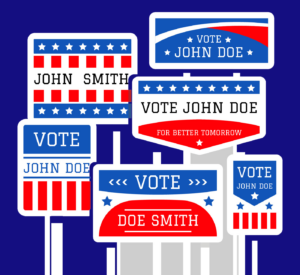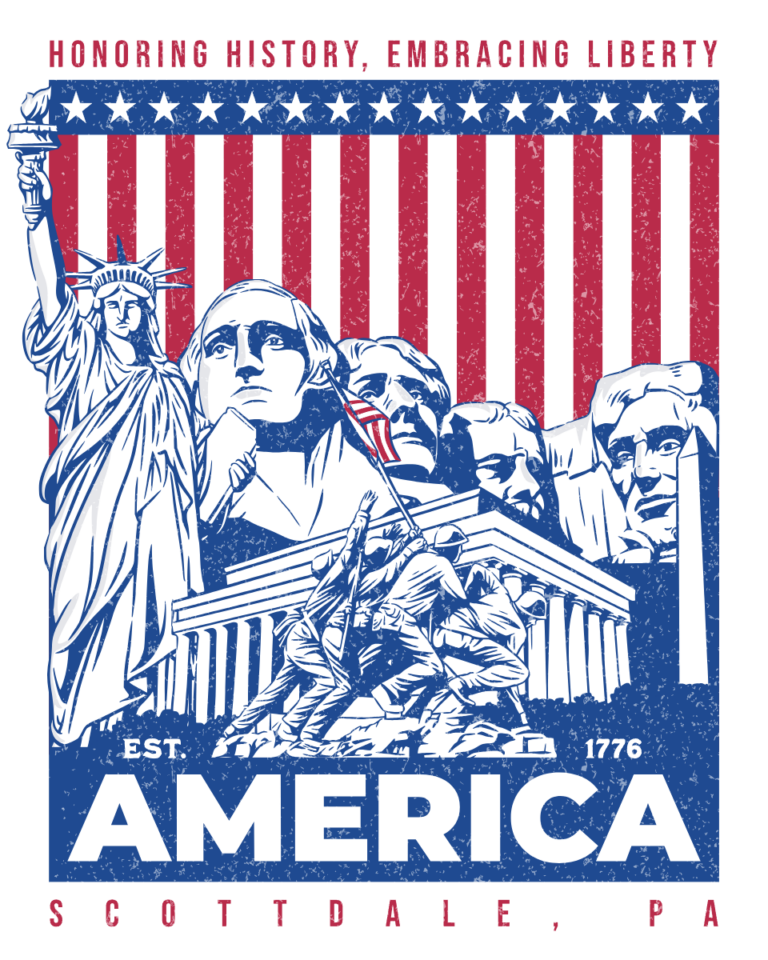In small towns across the country, election season brings a familiar sight: a forest of campaign signs sprouting up on every corner, lawn, and roadside. But when it comes to incumbent politicians, this display often veers into overkill — especially in tight-knit communities where everyone already knows who’s who. Take a drive through any quaint Main Street during a local election, and you’re likely to see the same name plastered on dozens of signs, screaming for attention in a place where the incumbent’s record should theoretically speak for itself. It’s a phenomenon that raises eyebrows and questions: Is this barrage of signage a genuine effort to connect with voters, or just a flex of power and resources in a game that’s already tilted in their favor?
 Incumbents, by nature, hold an edge. They’ve got name recognition and a track record. In a small town— where the population might not even fill a high school football stadium – that advantage feels magnified. So why the need for 50 signs when five would do? To the average resident, it can come off as less of a campaign strategy and more of a territorial claim, a way of saying, “I’ve been here, I’m staying here, and you’re going to see my name whether you like it or not.” It’s the political equivalent of a dog marking every tree in the park.
Incumbents, by nature, hold an edge. They’ve got name recognition and a track record. In a small town— where the population might not even fill a high school football stadium – that advantage feels magnified. So why the need for 50 signs when five would do? To the average resident, it can come off as less of a campaign strategy and more of a territorial claim, a way of saying, “I’ve been here, I’m staying here, and you’re going to see my name whether you like it or not.” It’s the political equivalent of a dog marking every tree in the park.
There’s a practical side to this, of course. Campaign signs are cheap, visible, and a time-honored tradition. They signal to voters that a candidate is serious, engaged, and willing to put in the effort. For challengers, they’re a lifeline to break through the incumbent’s built-in clout. But when the person already in office floods the town with their branding, it drowns out the competition in a way that feels less democratic and more domineering. In a small community, where local elections can hinge on a handful of votes, this saturation can subtly – or not so subtly – discourage underdog candidates from even trying. Why bother running when the incumbent’s face is staring down from every stoplight?
And then there’s the aesthetic cost. Small towns thrive on charm: the historic storefronts, the quiet streets, the sense of place that draws people in. When election season turns that charm into a cluttered billboard war, it’s the residents who lose. A sea of signs doesn’t just obscure the view – it can feel like a visual shouting match, one that prioritizes political ego over civic pride. Incumbents, who’ve likely spent years touting their love for the town, might do well to consider whether blanketing it in their own propaganda undercuts that message.
The counterargument is simple: incumbents aren’t breaking any rules. Campaign signs are protected free speech, and if they’ve got the resources to deploy them, that’s just smart politics. Voters can still choose freely; no one’s forcing them to pull the lever for the guy with the most yard stakes. Fair enough – but in a small town, where relationships and reputation matter more than glossy ads, this over-the-top approach risks alienating the very people incumbents claim to serve. It’s hard to shake the impression that it’s less about informing the electorate and more about reminding them who’s already in charge.
Maybe there’s a middle ground. Incumbents could lean on their record and trust the voters they’ve represented to remember their name without turning every intersection into a shrine. A few well-placed signs could suffice – enough to signal they’re still in the race, but not so many that it feels like they’re yelling over everyone else. It’d show confidence, restraint, and respect for the town’s character. Meanwhile, residents might appreciate a little less clutter and a little more faith in their ability to decide for themselves.
Excessive campaign signs don’t win elections on their own, but they do send a message. In small towns, where politics is personal, incumbents should ask themselves what that message really says – and whether it’s worth the cost to the community they’re supposed to lead. Less can be more, even in a game of name recognition. Let the work speak, not the signposts.
About Joe Levandosky
Joe Levandosky has been chronicling the highs, lows, and eyebrow-raising moments of Scottdale life since before the borough had Wi-Fi. When he's not chasing down town council drama or decoding zoning ordinances written in ancient bureaucratese, he's probably sipping lukewarm coffee and muttering about potholes.
A lifelong resident with a sixth sense for spotting political nonsense from 50 yards, Joe believes in transparency, accountability, and the sacred right to complain about parking. His opinions blend investigative grit with just enough sarcasm to keep things spicy—because in small-town politics, truth is often stranger than fiction.
He’s been called “
the voice of reason,” “
a thorn in someone’s side,” and once, “
the guy who knows too much about sewer budgets.” He wears all titles proudly.














The Sign Wars and the Small-Town Takeover
In small towns across the country, election season brings a familiar sight: a forest of campaign signs sprouting up on every corner, lawn, and roadside. But when it comes to incumbent politicians, this display often veers into overkill — especially in tight-knit communities where everyone already knows who’s who. Take a drive through any quaint Main Street during a local election, and you’re likely to see the same name plastered on dozens of signs, screaming for attention in a place where the incumbent’s record should theoretically speak for itself. It’s a phenomenon that raises eyebrows and questions: Is this barrage of signage a genuine effort to connect with voters, or just a flex of power and resources in a game that’s already tilted in their favor?
There’s a practical side to this, of course. Campaign signs are cheap, visible, and a time-honored tradition. They signal to voters that a candidate is serious, engaged, and willing to put in the effort. For challengers, they’re a lifeline to break through the incumbent’s built-in clout. But when the person already in office floods the town with their branding, it drowns out the competition in a way that feels less democratic and more domineering. In a small community, where local elections can hinge on a handful of votes, this saturation can subtly – or not so subtly – discourage underdog candidates from even trying. Why bother running when the incumbent’s face is staring down from every stoplight?
And then there’s the aesthetic cost. Small towns thrive on charm: the historic storefronts, the quiet streets, the sense of place that draws people in. When election season turns that charm into a cluttered billboard war, it’s the residents who lose. A sea of signs doesn’t just obscure the view – it can feel like a visual shouting match, one that prioritizes political ego over civic pride. Incumbents, who’ve likely spent years touting their love for the town, might do well to consider whether blanketing it in their own propaganda undercuts that message.
The counterargument is simple: incumbents aren’t breaking any rules. Campaign signs are protected free speech, and if they’ve got the resources to deploy them, that’s just smart politics. Voters can still choose freely; no one’s forcing them to pull the lever for the guy with the most yard stakes. Fair enough – but in a small town, where relationships and reputation matter more than glossy ads, this over-the-top approach risks alienating the very people incumbents claim to serve. It’s hard to shake the impression that it’s less about informing the electorate and more about reminding them who’s already in charge.
Maybe there’s a middle ground. Incumbents could lean on their record and trust the voters they’ve represented to remember their name without turning every intersection into a shrine. A few well-placed signs could suffice – enough to signal they’re still in the race, but not so many that it feels like they’re yelling over everyone else. It’d show confidence, restraint, and respect for the town’s character. Meanwhile, residents might appreciate a little less clutter and a little more faith in their ability to decide for themselves.
Excessive campaign signs don’t win elections on their own, but they do send a message. In small towns, where politics is personal, incumbents should ask themselves what that message really says – and whether it’s worth the cost to the community they’re supposed to lead. Less can be more, even in a game of name recognition. Let the work speak, not the signposts.
About Joe Levandosky
Joe Levandosky has been chronicling the highs, lows, and eyebrow-raising moments of Scottdale life since before the borough had Wi-Fi. When he's not chasing down town council drama or decoding zoning ordinances written in ancient bureaucratese, he's probably sipping lukewarm coffee and muttering about potholes. A lifelong resident with a sixth sense for spotting political nonsense from 50 yards, Joe believes in transparency, accountability, and the sacred right to complain about parking. His opinions blend investigative grit with just enough sarcasm to keep things spicy—because in small-town politics, truth is often stranger than fiction. He’s been called “the voice of reason,” “a thorn in someone’s side,” and once, “the guy who knows too much about sewer budgets.” He wears all titles proudly.